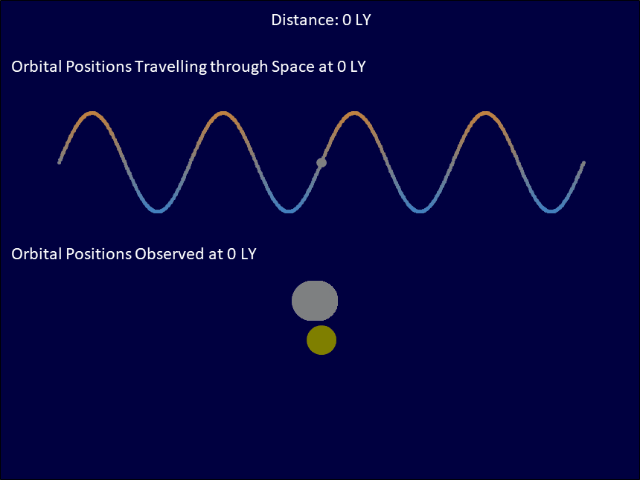When not writing software, my other interests are astronomy and astrophysics. Those who know me well will be aware I have a strong impulse to explain and educate and that I'm motivated to confront the growing tide of misinformation and conspiracy theories on social media.
Special Relativity is a popular target amongst conspiracy thinkers, and I've had a number of conversations with a variety of skeptics who feel convinced the theory _must_ be wrong.
Some have argued that as we've only ever measured the speed of light using earth-based experiments and sources (or so they suppose), we can't rule out the possibility that the speed of light _might_ be affected by the speed of the source.
Well we can and we have ruled this out, so I decided to generate some animations with Excel to demonstrate how we _know_ this isn't true.
---
The following animations were all produced using software I wrote in Excel VBA. Individual frames were generated as physics simulations that output graphical elements to a chart area, which were then exported as a bitmap, and compiled into an animated gif using PIPP (normally an astrophotography tool available at AstroPipp. Other free tools to generate gifs from images are available online (such as Ezgif).
What Happens if the Speed of Light depends on the Speed of the Source?
Consider this first animation, where I show one star in a tight binary orbit around another star. This orbit (based upon a real example) has a period of 1.7 days and an orbital velocity of 169 km/s (very roughly 0.05% of the speed of light). To keep things simple, I'm going to keep its partner stationary. As the star moves away from us, its light shifts a little towards the red, and as it moves towards us, it shifts a little towards the blue. I'll use this as a convenient means of colour coding where it is in its orbit.
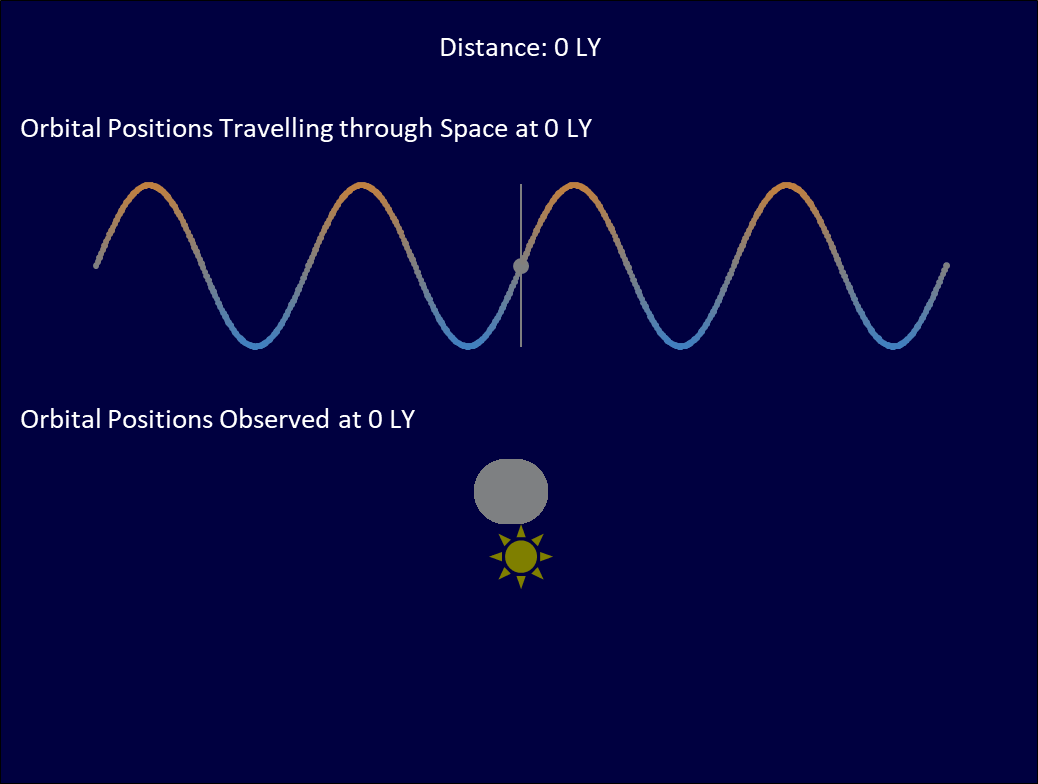
At the top of the animation, I illustrate how light, travelling outwards from this star would carry images of this event to an observer located at the vertical white line. What the observer then sees is the events as they cross the line.
Now, if the speed of light depends on the speed of the source, then we should anticipate that light emitted when the star is travelling towards us, would move more quickly than light emitted when the star is moving away.
So let's consider what that does to the view of this star when observed from 100 ly away? You can see that the blue light has travelled a little further than the orange coloured light, which has 'tilted' the shape of the sine wave so that one side of the wave is steeper than the other. The affect this has on what the observer sees, is that the star now appears to move more slowly as it travels from left to right, but then rushes around the back of the star.
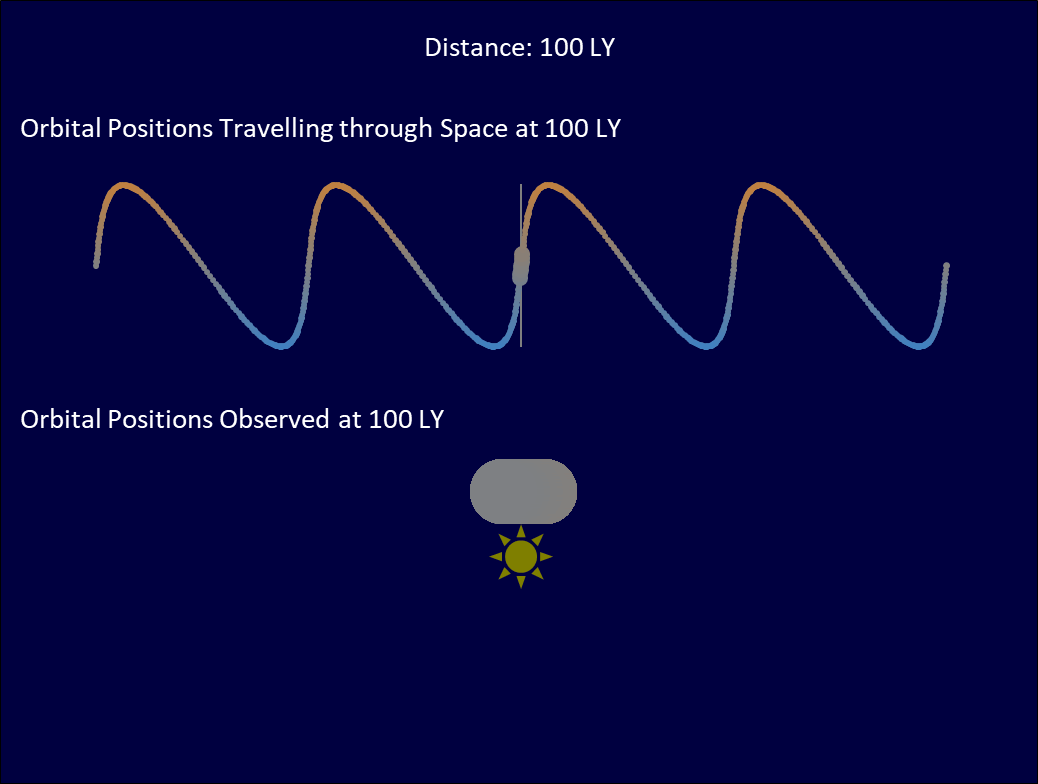
Let's go out a little further. At 200 light-years away, the sinewave has tilted so much that the previously steep section is now an overhang! The blue light from one side of the orbit has actually overtaken the orange light from the right side of the orbit that was emitted 0.85 days previously.
The observer will see something very strange indeed. Yes we have the slow passage of the star from left to right, but for a brief moment, the star splits into 3 images of itself - one moving in the wrong direction around the orbit - ie seemingly going backwards in time, before two of the images fuse back and disappear again.
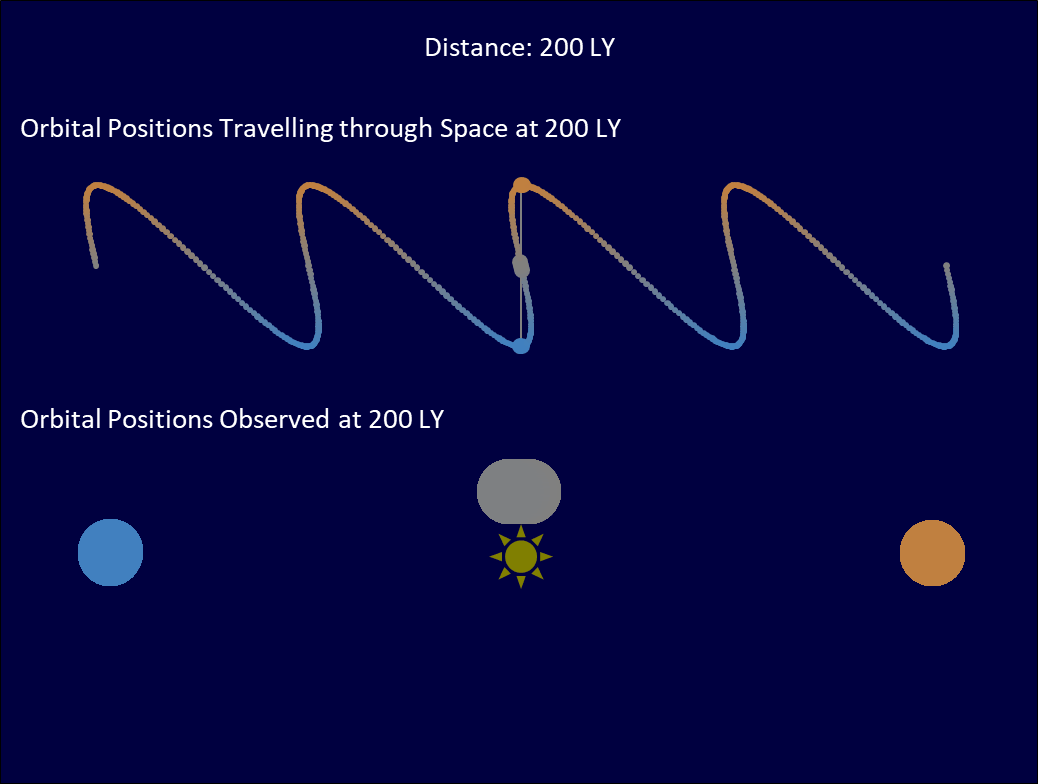
At 400 lightyears the triple image of one star is visible about half the time.
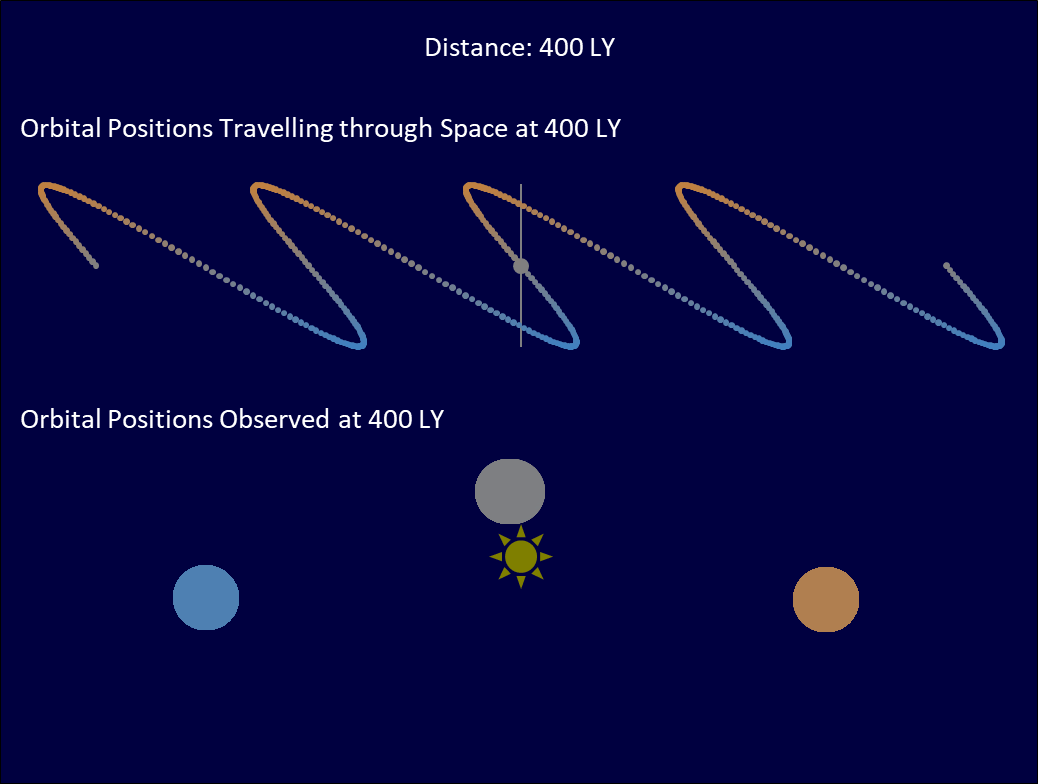
At 800 lightyears distance, it gets crazier still. The blue light has now overtaken the orange light from the _previous_ orbit, leading to a truly baffling image, with at least 3 and sometimes 5 images of the same star appearing.
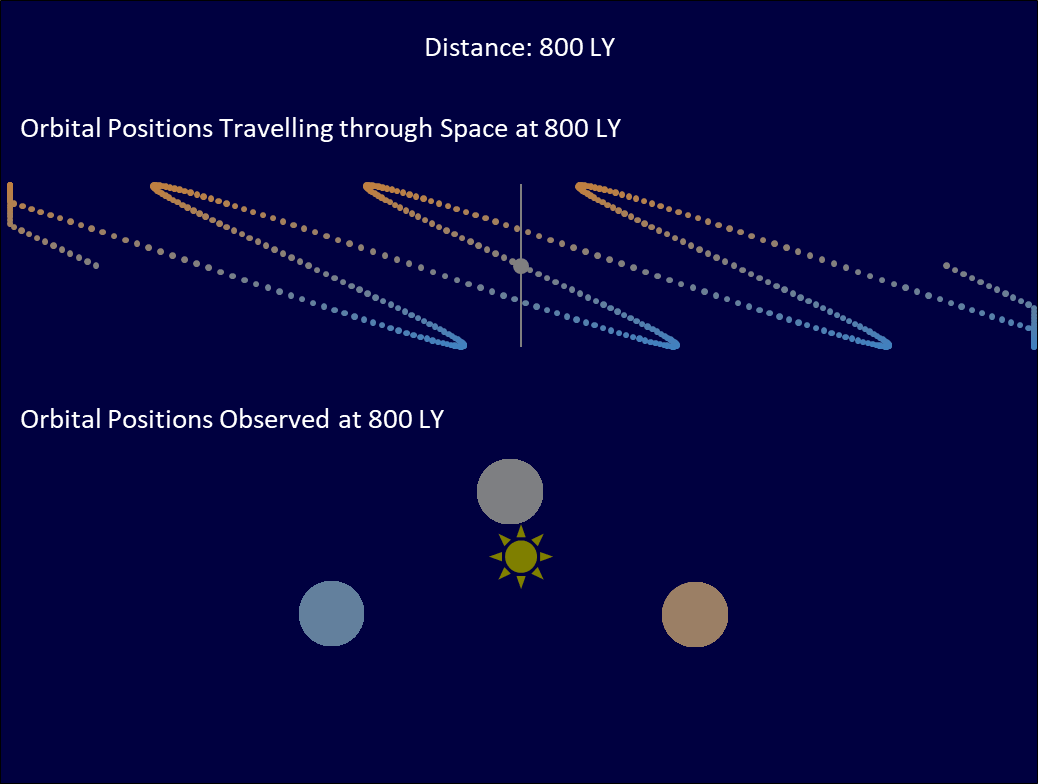
This continues without limit. The further you are away from such a star, the more images you would see - IF the speed of light is dependent on the speed of the source.
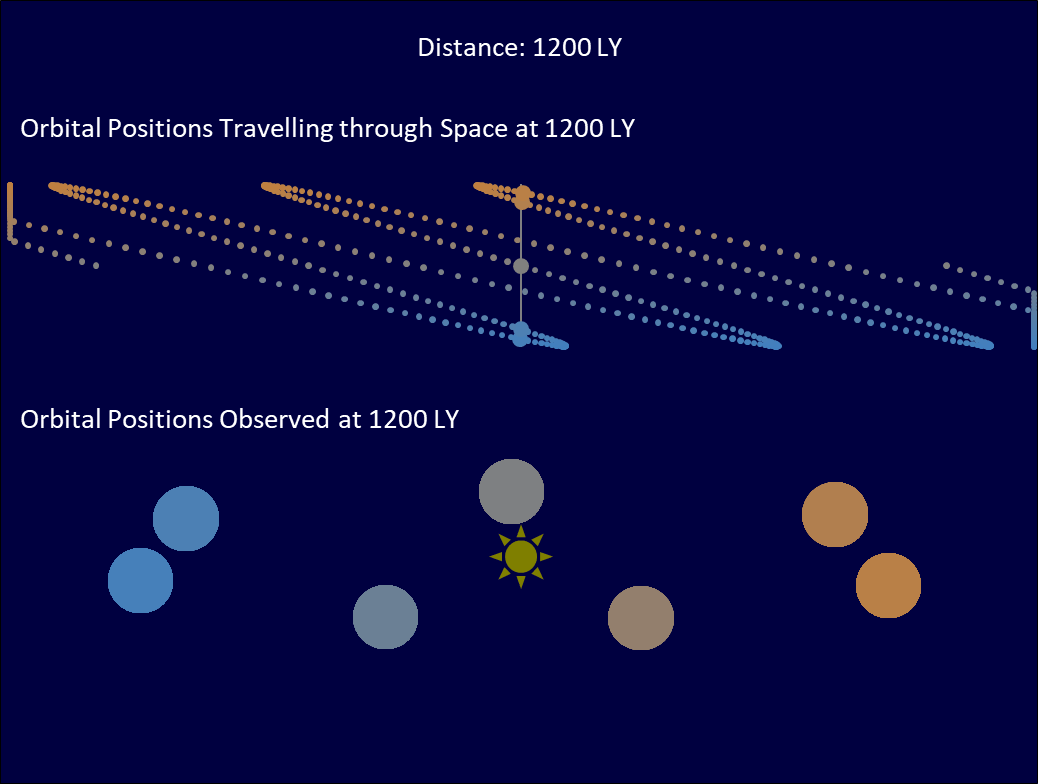
In practice, you're unlikely to SEE such multiple images as visually separate stars, but you would be able to see multiple copies of spectral lines from the star doing exactly the same thing. The fact that we have NEVER seen such a display is strong evidence that the speed of light is independent of the speed of the source.
But has anyone really looked? Well, yes they have.
In 1977, Kenneth Brecher examined a number of binary stars in tight orbits like this, to look for effects of this type. For technical reasons, his preferred star was an x-ray emitter, allowing him to make very precise determinations of any effect that the velocity of the star had on the speed of light. See Brecher Paper
And the result? The speed of light was found to be independent of the speed of the source to better than 1 part in a 500 million.
So - sorry relativity skeptics, but the speed of light doesn't depend on the speed of the source.

